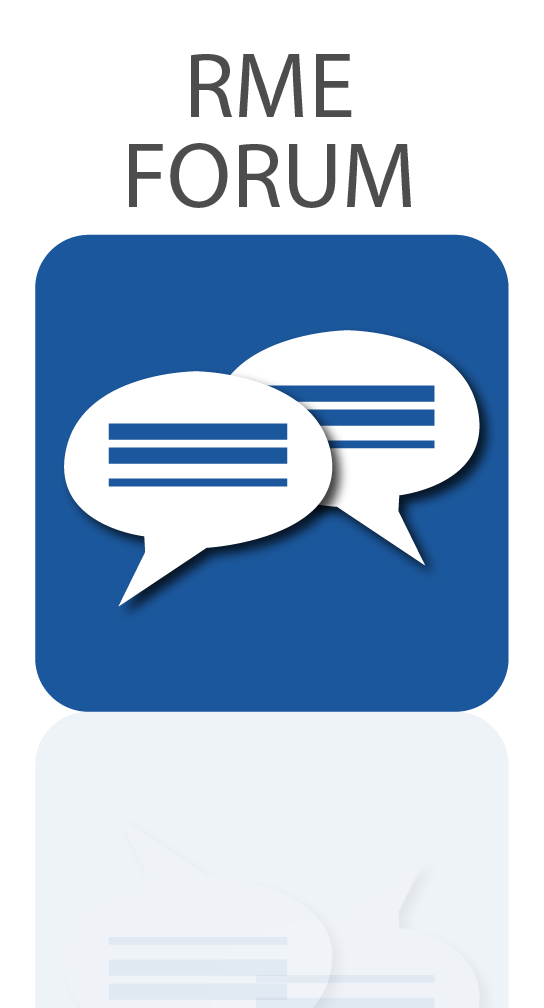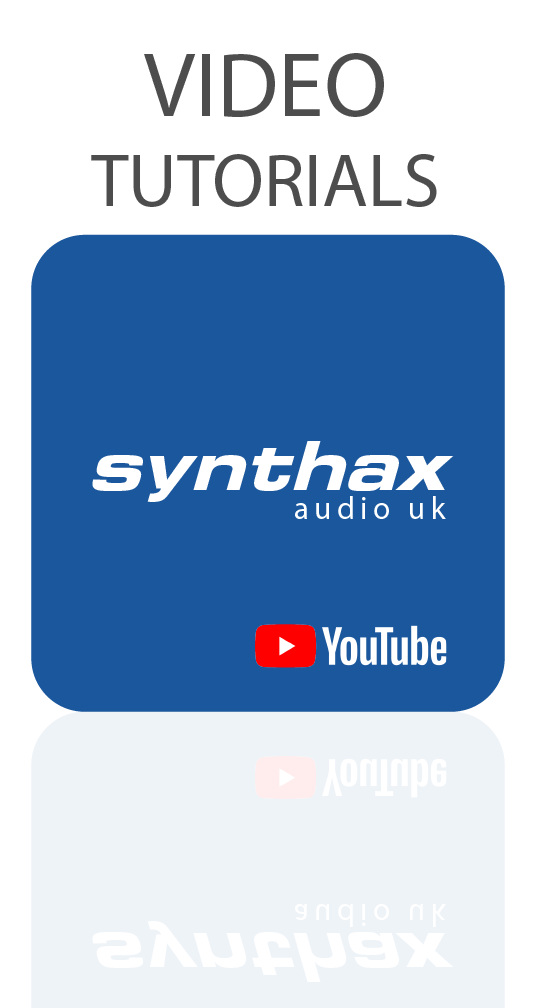From Production Runner to Oscar-Winning Re-recording mixer…
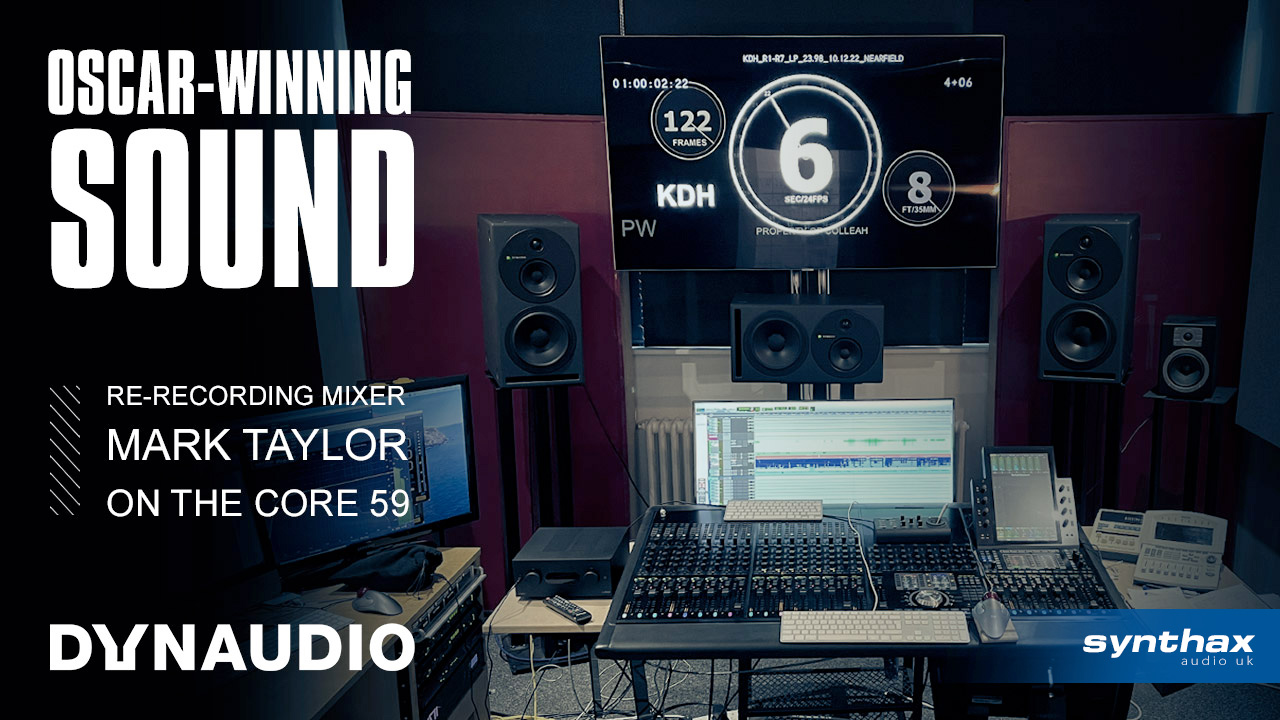
Mark Taylor discusses studio gear, mixing sound for film, and his preferred choice of studio monitors.
Update March 2023: We’re pleased to announce that Mark is now a two times Oscar Winner for Best Sound (1917 and Top Gun: Maverick). Many congratulations Mark!
Mark Taylor is a Re-recording Mixer and Sound Effects Editor who’s worked on some of the biggest films of the last 25 years.
With a credits list that’s far too numerous to list in its entirety – his imdb page is something to behold – Mark’s provided the sonic midas touch for an incredible number of hit films.
Everything from choice British cuts like Trainspotting and Snatch; Daniel Craig-era Bond blockbusters such as Casino Royale and No Time To Die; Sci-Fi and Fantasy epics like The Martian and Harry Potter and the Order of the Phoenix; the list truly goes on (Jason Bourne, Captain Phillips, Top Gun: Maverick…).
Unless you’ve actively made a concerted effort to avoid watching mainstream Western cinema over the last couple of decades, we think it’s fair to say you’ve heard Mark Taylor’s work!
Primarily operating out of Surrey’s Shepperton Studios, Mark was kind enough to give us an insight into his work as a Dubbing Mixer / Re-Recording Mixer; some tips on mixing sound for the big screen; and why he chose Dynaudio Core 59s as his new studio monitors.
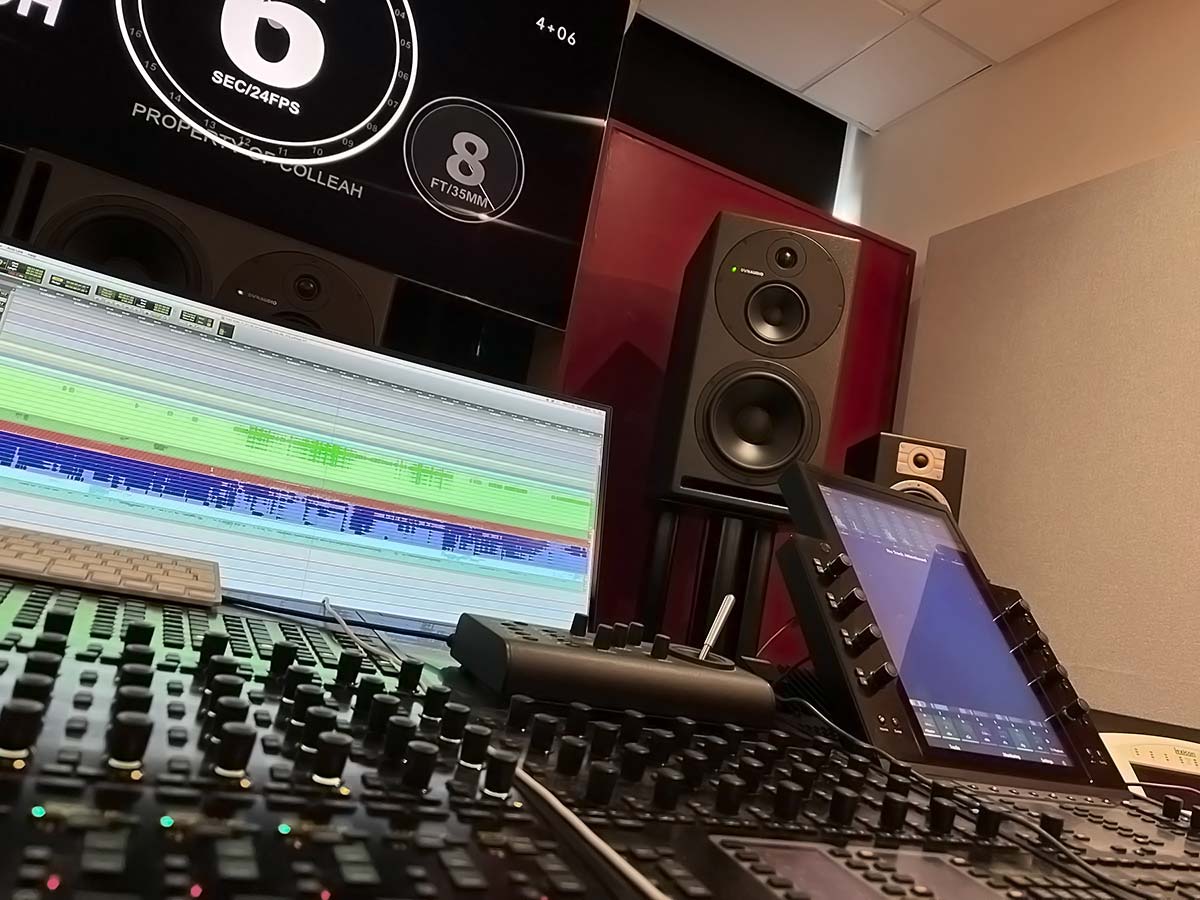 Dub Side of the Moon
Dub Side of the Moon
The world of film has a large number of unique roles, with the Sound and Music Departments alone often requiring the full gamut of audio engineering expertise.
From On-Set and location sound specialists like Production Sound Mixers, Boom Operators and Sound Assistants; to the Post-Production team made up of Sound Designers, Dialogue Editors and Foley Artists; our favourite feature films tend to be the collaborative results of many talented people.
One role we haven’t mentioned yet is that of the Dubbing Mixer (or Re-Recording Mixer as it’s also known). A highly-specialised role, the Dubbing Mixer’s job is to combine the dialogue and sound effects into a finished mix – a pivotal stage in any production, and one that can truly ‘make or break’ the final sound of a film.
“I am a Re-recording Mixer and sometimes Sound Effects Editor,” Mark explains. “My role as a mixer is to take all the sound effects track-lays and premix them in whichever format or speaker configuration we’re working in.
“I predominately mix sound effects, foley and backgrounds for feature films and TV, although more recently that’s been more dialogue and music. Once we reach the final mix, I combine those pre-dubs with the dialogue, music and crowd.”
Like many audio engineering roles, the job is a mixture of technical knowledge and artistic craft, requiring a set of well-trained ears (and a deft touch) behind the mixing console, in order to help the Director and the rest of the team achieve their creative vision. Other considerations include complying with any applicable loudness or maximum level recommendations for audio, such as the CALM Act in the United States, or Europe’s EBU R128 loudness protocol.
“On most features the mixing responsibilities are divided into two,” Mark continues. “DX and MX on one side (Dialogue and Music tracks respectively), and FX and BG on the other (Sound Effects / Foley and Backgrounds / Ambience). Although on some projects I’ll mix everything.”
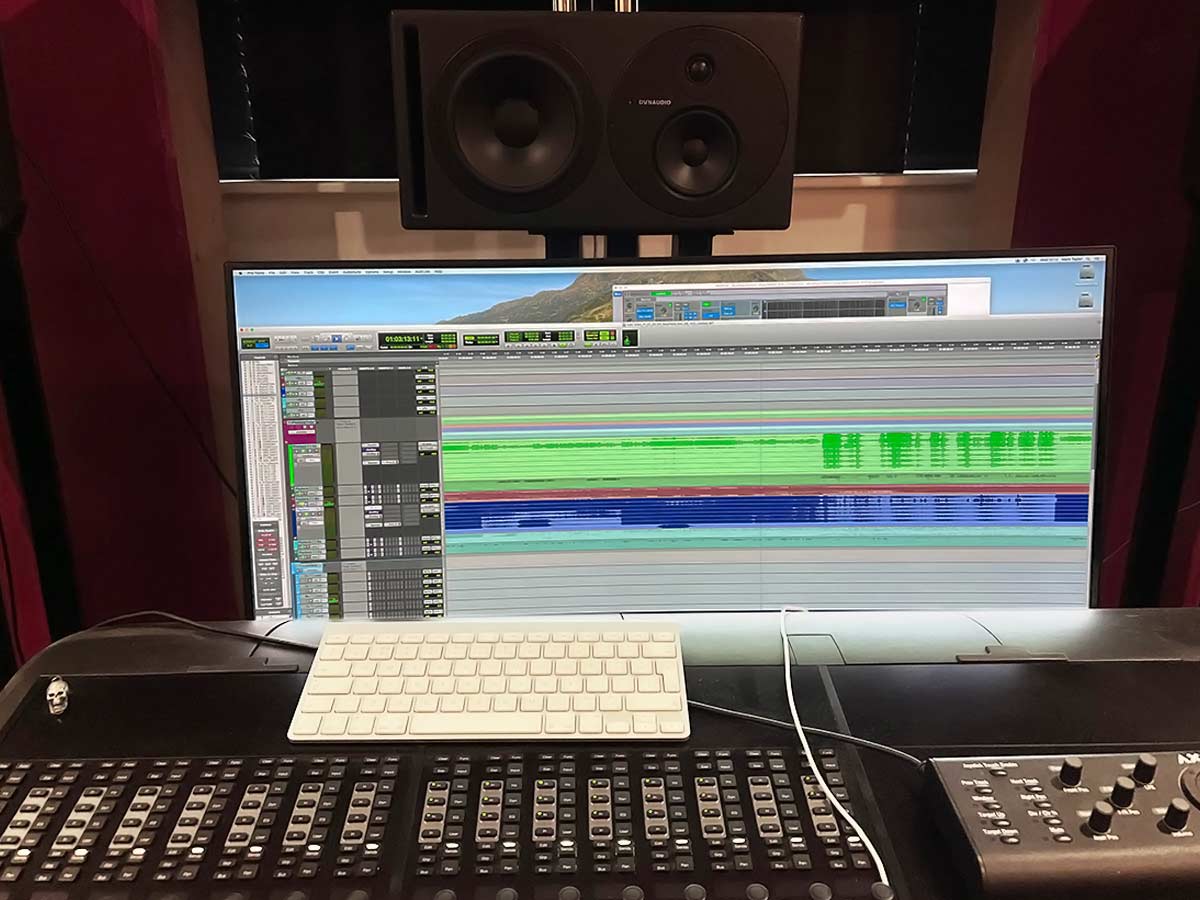 1917: Oscar-Winning Sound
1917: Oscar-Winning Sound
George Lucas famously once said that ‘sound and music are 50% of the entertainment in a movie’. Another oftentimes repeated (and less enthusiastic) observation of film sound is that ‘nobody really notices it unless it’s really bad’.
Whilst that may be true for your average movie-goer, Hollywood was listening – it was Mark’s work on 1917 that saw him awarded an Academy Award for Best Sound in 2020, alongside Production Sound Mixer Stuart Wilson.
If you haven’t seen Director Sam Mendes’ First World War drama, the film plays out as a single, ongoing shot to remarkable dramatic effect. There are no scene changes, cuts or joins either sonically or visually – both the sound and picture co-exist perfectly with one another throughout its 2-hour runtime.
It’s an exhilarating and moving depiction of the tragedy of soldiers drafted into war, following the plight of two young men as they risk their lives on the Western Front.
From a production perspective, maintaining the audience’s connection with the lead characters throughout their journey is an essential element. We were keen to find out therefore how this approach contrasts with something like Alien Convenant – is Mark’s goal one of sonic realism, or to create something more other-worldly and cinematic?
“a moment captured for eternity”
“When premixing a movie I try to make everything as believable as possible as a starting point, to immerse the viewer sonically in the world they’re watching,” Mark explains. “As we progress with the final mix, reality may take a back seat – whether that’s for music, important expositional dialogue, or dramatic story telling.”
“The more films you work on the more you learn, and I am still learning. You definitely take experiences and techniques from previous movies you’ve worked on, and apply them to similar situations in others, even if it’s just acting as a catalyst for new ideas. One big change I think from when I started is my use of dynamics, films are definitely getting louder.”
“I love films that tell a great story, that take an audience on a journey, and there are many I’ve worked on that do that. I also love the collaborative process of mixing a movie, when everyone pulls together to create a mix that, let’s face it, becomes a moment captured for eternity.”
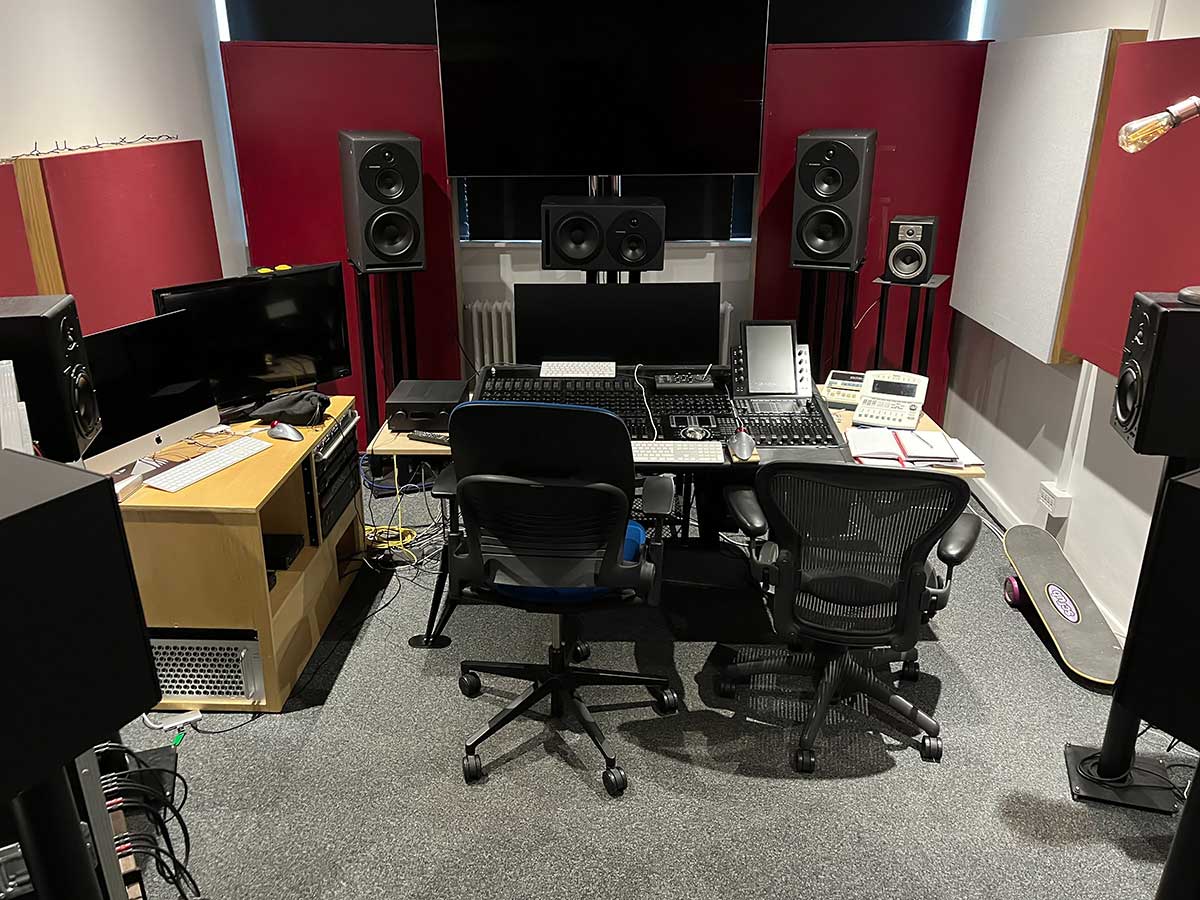
In the studio with Mark Taylor
Mark’s journey behind the faders begins in the cutting rooms of Shepperton Studios, an iconic UK film studio now part of the Pinewood Studios Group, and somewhere that Mark has a continued relationship with to this day.
“I started back in 1987 as a runner at Shepperton, having spent a year at the School of Audio Engineering,” Mark recalls fondly.
“In those days, progressing through the ranks took so much longer, but I was lucky enough to learn many aspects of the job on the way. I worked in the 35mm transfer bay, in the projection/machine room, recorded foley and ADR. Occasionally I was also allowed to help mix foley at the final mix – all very good experience.
“Then as Shepperton expanded their mixing setup and a few people moved on, I was given the opportunity to start mixing full time. I worked with Mike Dowson for many years, before going freelance myself. In that time we went from mixing on 35mm to the now ubiquitous Pro Tools via AMS Audiofile, Avid AudioVision, Akais, PCM 800s, DAT and many more. All helped by the amazing TimeLine Lynx sync. system.
“These days I currently have a small premix set-up, with a 24 fader Avid S6 and Mac Pro as main playback, and an iMac as picture/recorder rig. All routing, monitor control, Room EQ etc is handled by an Avid MTRX. I also have an old school rack of outboard, which I don’t use nearly enough. All of my monitors are Dynaudio.”
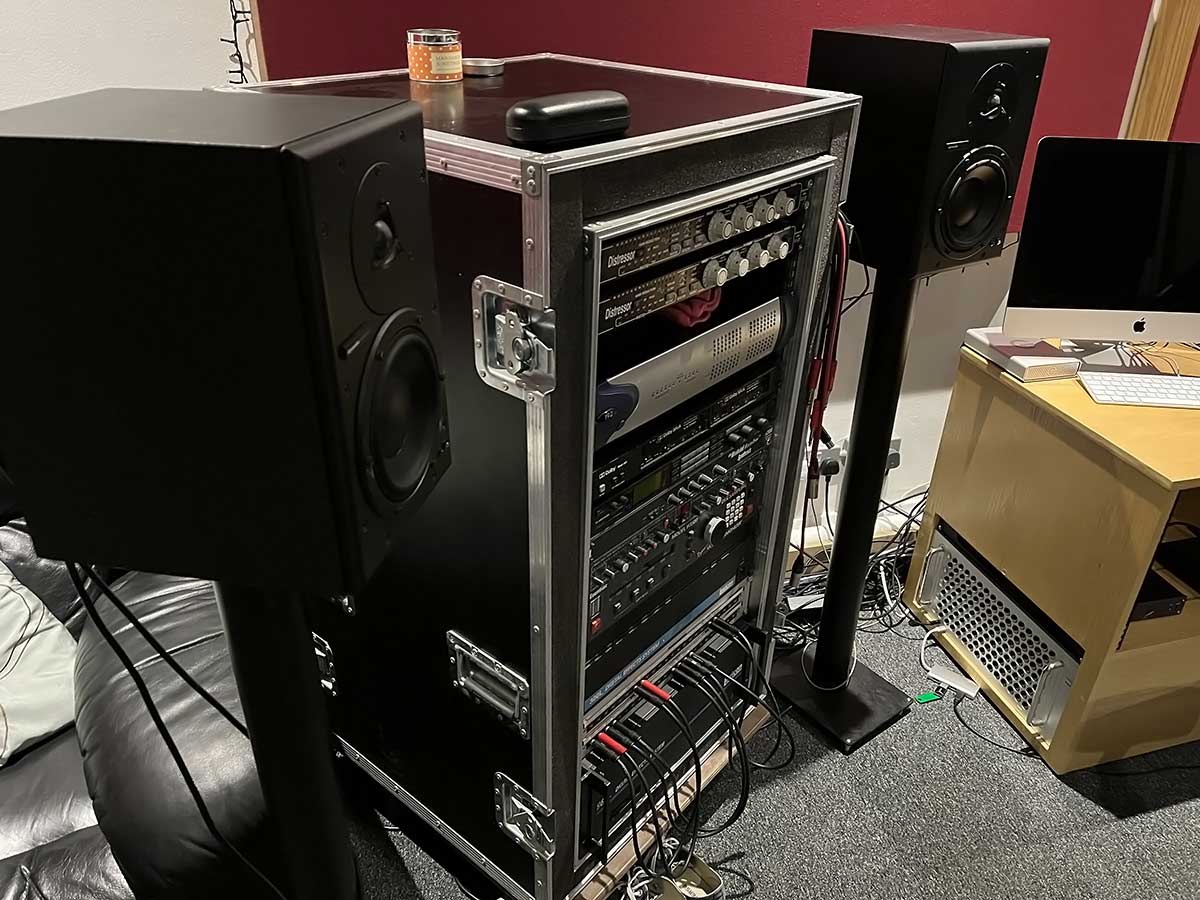 The gear may have changed, but high-quality monitoring remains paramount to Mark’s work. As it turns out, Mark knows Dynaudio monitors very well indeed, having used them throughout his career.
The gear may have changed, but high-quality monitoring remains paramount to Mark’s work. As it turns out, Mark knows Dynaudio monitors very well indeed, having used them throughout his career.
“Whilst working at Shepperton, my then boss Brian Saunders commissioned Munro Acoustics to convert a space into a TV mix room,” Mark says on the subject of monitors.
“The speakers they installed were Dynaudio as the LCR mains – M3F’s if I’m not mistaken – with smaller Dynaudios as surrounds. I was hooked!”
“Shepperton then built some amazing mix stages for foreign version mixing, with cutting rooms attached, all of which had Dynaudio monitoring.”
After many years at Shepperton Mark made the decision to set out on his own path, although his choice of monitor remained.
“Once I branched out on my own, I chose BM6’s as my cutting room monitors,” he continues.
“They served as my main LCR for many years, before I acquired a set of BM1.5’s, powered by some lovely Bryston Amps. As they were passive they did sometimes struggle with the many gunshots/explosions I was mixing! So Phil Pyatt from Munro’s recommended a set of BM15A’s, which I still love working on to this day. That was about 10 or 11 years ago.”
“the clarity in the mid-range, and the solidity in the low end, are outstanding”
Dynaudio’s BM Classic Series of speakers still have their fans worldwide – as such, Dynaudio keeps these models available for engineers who favour a slightly more vintage sound.
Feeling it might be time to try something new however, Mark reached out to Synthax UK with an interest in testing out Dynaudio’s latest flagship range of pro studio monitors, the Core Series.
“I happened to mention to Phil (Pyatt) I was after a new set of mains, and he suggested I give the Core 59’s a try,” Mark says. “He put me in touch with Martin (Warr) at Synthax UK, who lent me a pair for demo.
“I spent a week A-Bing them with my 15’s and was sold, and I now have an amazing LCR Core 59 set up. They’re 3-ways which took a while to adjust to, but the clarity in the mid-range, and the solidity in the low end, are outstanding.”
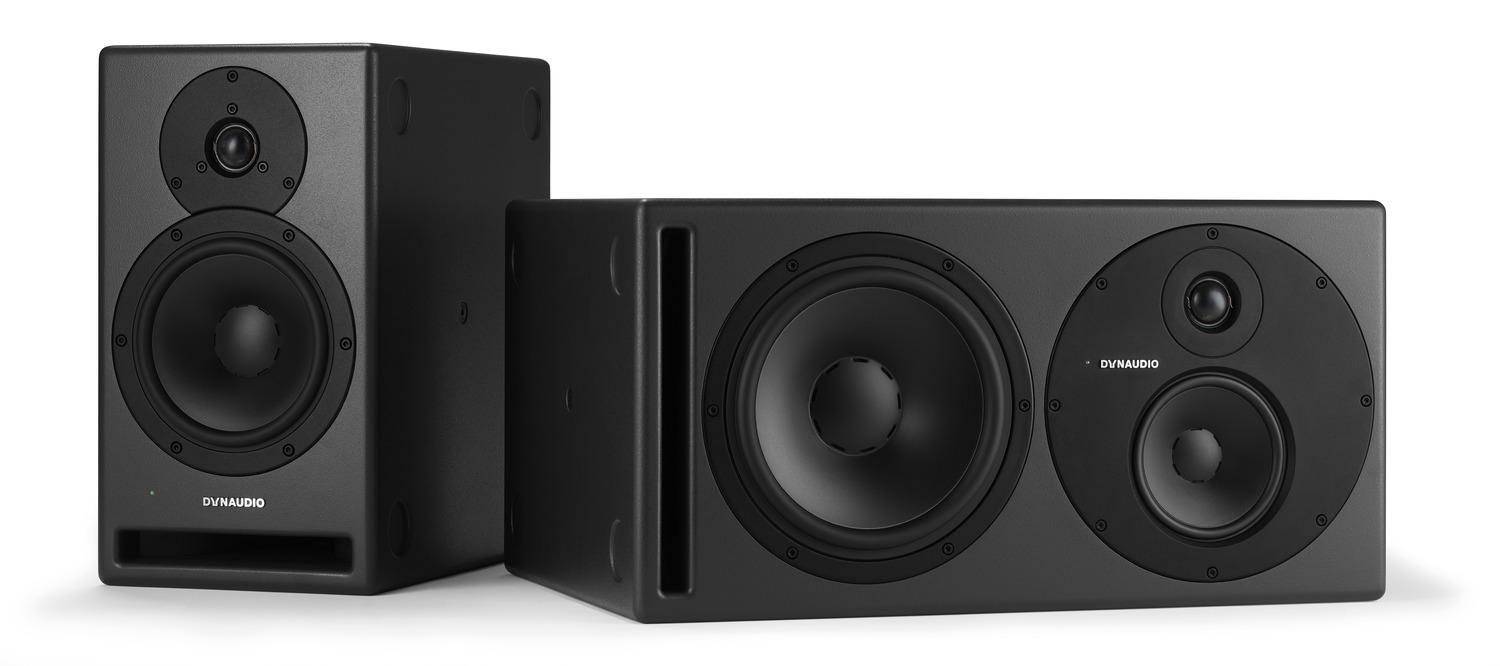 Mission: Probable
Mission: Probable
When asked what he’s working on next, Mark replies simply with two words: “Mission Impossible”. And regardless of what Ethan Hunt faces on his next assignment, we can be certain of one thing – sonically, he’s in very safe hands.
A huge thanks to Mark Taylor for taking time out of his busy schedule to speak to us for this article. To find out what he’s got in the pipeline (and for a fine selection of movie night fodder) check out his imdb page.
Additional Links:
To find out where to buy Dynaudio studio monitors in the UK, visit our Dynaudio UK Dealers page.
See the full range of Dynaudio Core Series Monitors
Would you like a demo of the Dynaudio Core Series in your studio? Give us a call on 01727 821 870, or contact us here.
![]()
Dynaudio is world-famous for making hand-crafted high-end loudspeakers for living rooms, home cinemas, cars and professional recording studios.
Since the beginning in 1977, the company has made iconic products rooted in a love of music and film – reproducing exactly what the artist intended. Nothing more, nothing less.



















